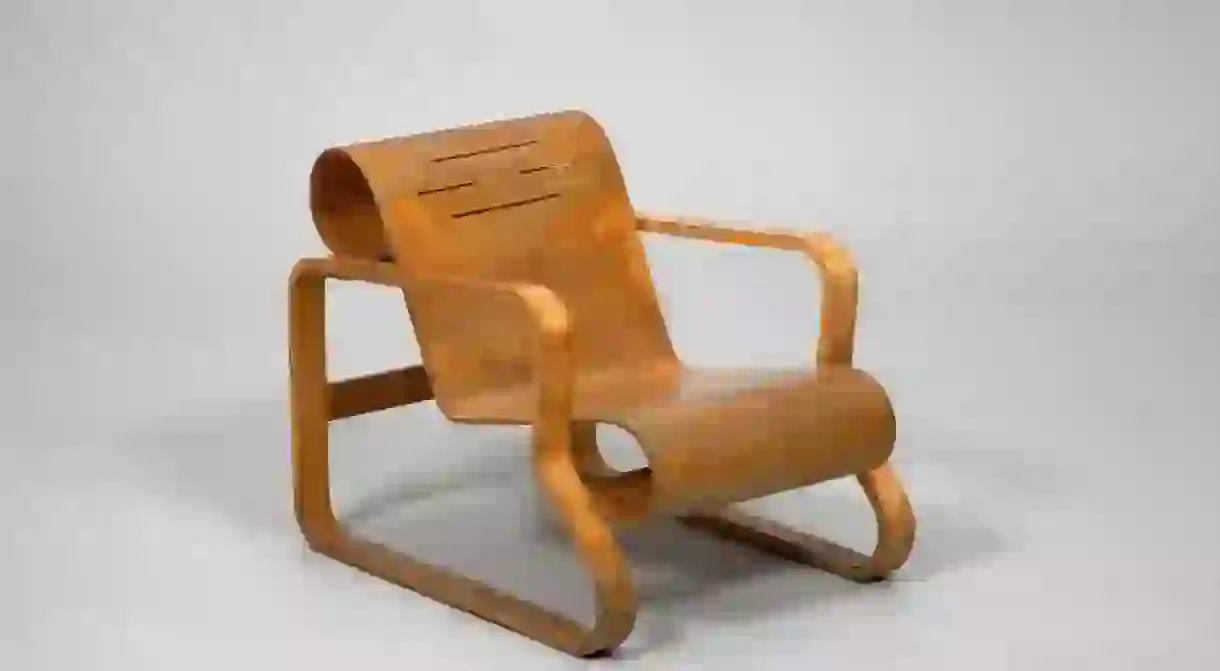Beautiful New Design Book Delivers The Ultimate Chair Porn

Midcentury fanatics rejoice – 100 Midcentury Chairs is the ultimate compendium of both truly iconic and less well-known chairs from this golden era. It was a tough ask, but we got author Lucy Ryder Richardson to select her five favourite designs from the 100 featured.

The former journalist and Modern Shows co-founder plumped for five chairs she had seen at shows and auctions rather than super-rare designs, choosing those that she either owns or would love to have. Ryder Richardson has an early Cherner at home, which was the chair Woody climbed up on to woo his cowgirl girlfriend Jessie in Toy Story 2. Others, like Eames’ Child’s chair, are important for historical reasons.
But opting for just five was tricky according to Ryder Richardson: “It’s a shame to have missed out on Nanna Ditzel’s hanging wicker egg, any chair by Danish master Hans Wegner, the wire series by Harry Bertoia, or Marco Zanuso’s early work,” she says. There are also some pretty fascinating stories surrounding the chairs in the book, including that of the G Plan easy chair designed by Paul Conti, which is famous for being the chair that Dr No sat in while stroking his white cat in the James Bond movie You Only Live Twice.
Without further ado, here are Ryder Richardson’s top picks and the stories behind them:
1 Finn Juhl – Chieftain chair

After a 20-minute bidding war at Phillips’ ‘Nordic Design’ auction in London in 2013, an early Chieftain chair, designed by Finn Juhl and executed by Niels Vodder, became the world-record holder for the highest price ever achieved for a piece of Scandinavian furniture. It reached a staggering £422,500, elevating Juhl’s furniture to art collector status.
Expressive and organic, just the right amount of support is given in exacting minimal proportions to make the sitter look as if they are floating. The chair originally got its name after The King of Denmark tried it for size at an exhibition and a journalist suggested the designer call it ‘The King’s chair’. “I’d prefer The Chieftain’s chair,” Juhl said, having been inspired by ancient tribal weaponry and armour.
2 Alvar Aalto – Paimio armchair 41

When famous architect Alvar Aalto won the commission to design a tuberculosis hospital in Paimio, south-west Finland in the 1930s, he wanted the building and its furniture to be as much a contributor to the healing process as the medical treatment.
The Paimio armchair was designed to sit the tuberculosis patient up at just the right angle to help them breathe; it features two loops of beech (later birch) fused together to form arms, legs and runners, which act like springs, allowing a certain bounce. “Though buoyant as a spring cushion, the seat back is virtually unbreakable,” Aalto said at the time. Aalto’s sculptural tour de force inspired some of the greatest designers of the 20th century.
3 Norman Cherner – Cherner chair

Hands down the sexiest plywood chair of all time, the Cherner chair resembles a musical note with its sleek curved arms sculpted and steam-bent from a length of solid wood. You may have seen the Norman Rockwell image ‘The Artist at Work’, which made this chair famous, back in 1961.
The story behind it also adds to its allure. Cherner was walking past a Manhattan showroom when he spotted his axed 1958 design, six months after Plycraft founder Paul Goldman had said it was too expensive to produce. New Yorker Cherner also noticed that Goldman had changed the designer’s name on the sticker. With original drawings and friend and fellow designer George Nelson’s testimony, Cherner successfully sued Plycraft for monies owed and a commitment from the manufacturer to produce and pay for his design well into the early 1970s.
4 Charles and Ray Eames – Child’s chair

Charles Eames’ love of Swedish folk art is illustrated in the heart-shaped cut-out that doubles as a clever handle for two tiny fingers, while wife Ray focused on the colour; she tested all kinds of aniline stains, including red, blue, yellow, black and magenta. Although hugely popular, the Child’s Chair was a financial blooper.
First Colonel Evans, head of the Eames manufacturing company, died, then Eames found out that even though they had secured a patent, Evans Products Company had no proper distribution network set up. Sales figures lagged way below initial expectations and, once the trial run of 5,000 had sold out, no further production followed – until recent years. The original chairs now fetch thousands at auction and have become real collectors’ items.
5 Poul Kjærholm – PK22 chair

A natural who honed his craft as an apprentice carpenter before shining at college, Poul Kjærholm’s light touch with metal took midcentury design in a whole new direction. While the Dane’s contemporaries mastered wood, he championed steel. A huge fan of Piet Mondrian, Gerrit Rietveld and Mies van der Rohe, steel was Kjærholm’s canvas, and leather, marble, cork and rope his paint.
As unfashionable as metal had become post-Bauhaus era, Kjærholm’s lightness of touch, the juxtaposition of soft leather with machine-age steel and 50:50 mix of handcraft and industrial technique meant his lounge chair could not be ignored and is still a favourite with Midcentury enthusiasts.
100 Midcentury Chairs: and their stories by Lucy Ryder Richardson (Pavilion £16.99) is available now.













